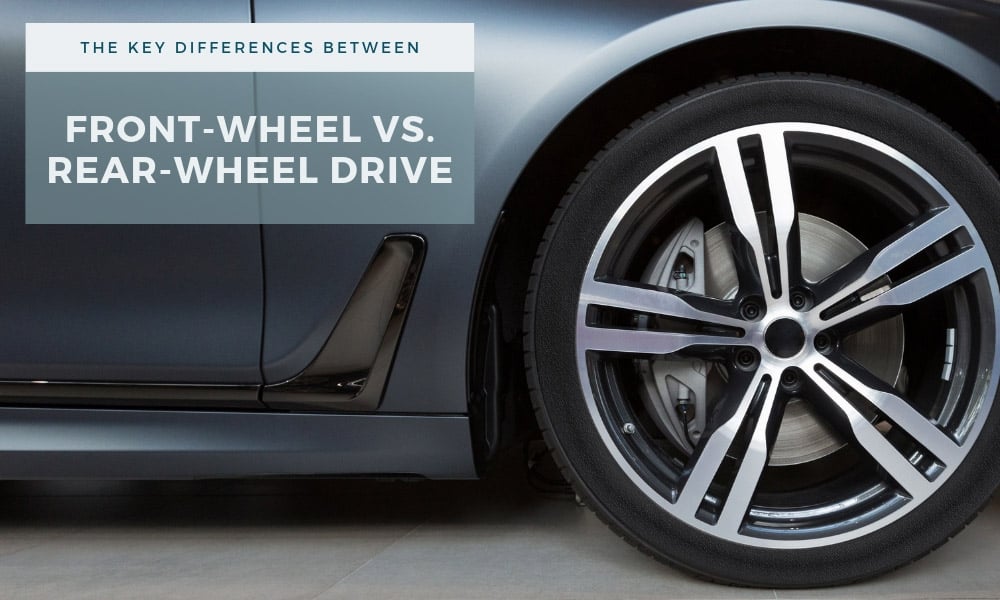
Several factors go into choosing the perfect car. One of these is whether you’ll have front-wheel or rear-wheel drive. The difference between the two has a substantial impact on how your car will handle. To help you with your selection process, we’ve created a brief overview of how these two options differ. Below we’ll list a few factors to take into consideration as you weigh the two options.
Weight Distribution
- Front-wheel: With front-wheel drive, the majority of the vehicle’s weight goes toward the first half of the car. This is oftentimes ideal for smaller cars, as that added weight works well in supporting the engine. One con of front-wheel drive is that the focus of the weight generally causes the brake pads and tire tread to wear faster.
- Rear-Wheel: You may expect that rear-wheel drive shifts all the weight toward the back of the vehicle. On the contrary, this causes the weight distribution to become more even. For larger vehicles, this is optimal when wanting to preserve the tread and improve braking.
Traction
- Front-Wheel: Regarding traction, front-wheel drive oftentimes comes out on top. The added weight in the front creates better security in adverse weather conditions, offering you more comfort when navigating ice or snow.
- Rear-Wheel: Unfortunately, the traction in rear-wheel doesn’t react as well when it comes to bad weather. If you live in an area that experiences extreme seasons, we recommend using snow tires in the winter.
Steering
- Front-Wheel: If front-wheel drive’s winning point is traction, its Achilles’ heel is the steering. If you tend to drive on bumpy roads or take sharp turns, you may find that you have a difficult time achieving full control of your movements.
- Rear-Wheel: Rear-wheel drive tends to handle steering exceptionally well. It’s for this reason that we oftentimes see tow trucks with rear-wheel drive. If you drive a particularly long or heavy vehicle, this may be the optimal choice.
Cost
While there may not seem to be a large difference in price, front-wheel drive usually costs less. However, front-wheel drive can oftentimes carry more expensive repair costs. When it comes to budgeting for your wheels as a whole, make sure that you’re making cost-friendly choices for every part. For example, if you buy high-quality 2014 Toyota Camry rims at an unbeatable price, you’ll have money left in your budget. You can use the extra funds to invest in the style of wheels that work best for your personal driving needs.


